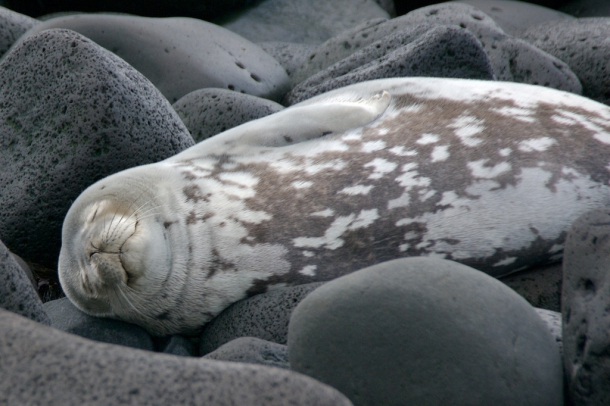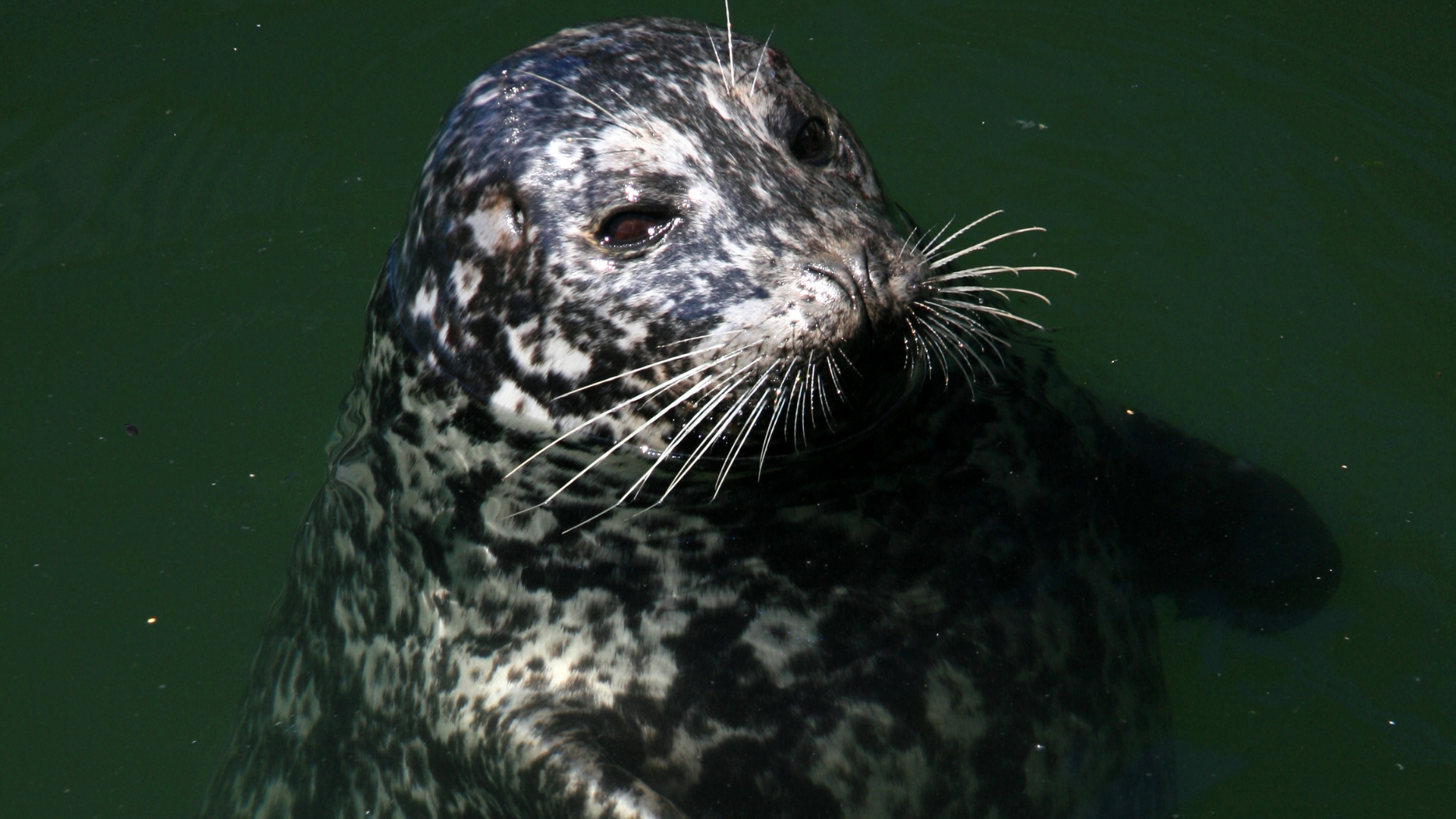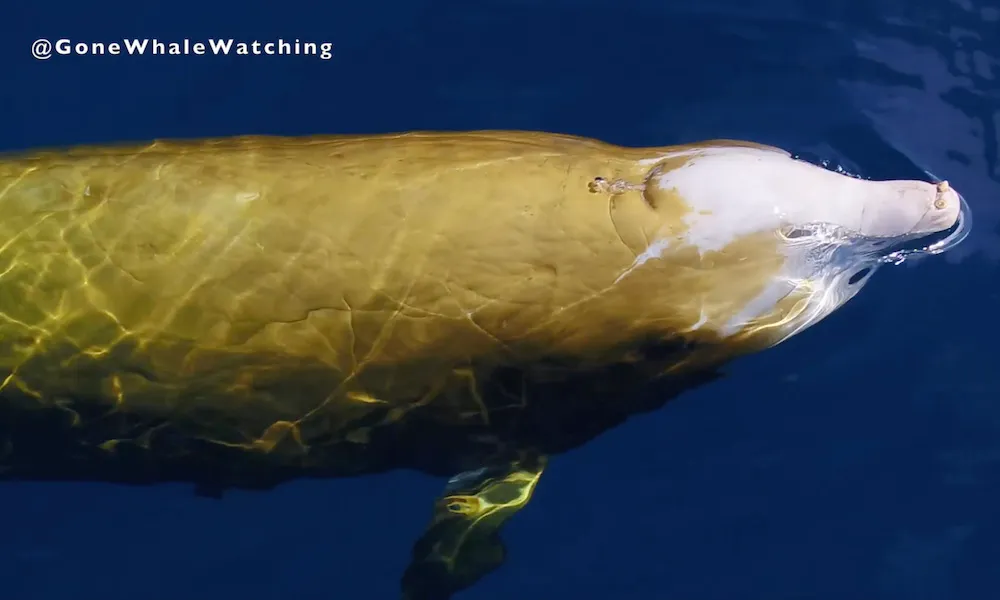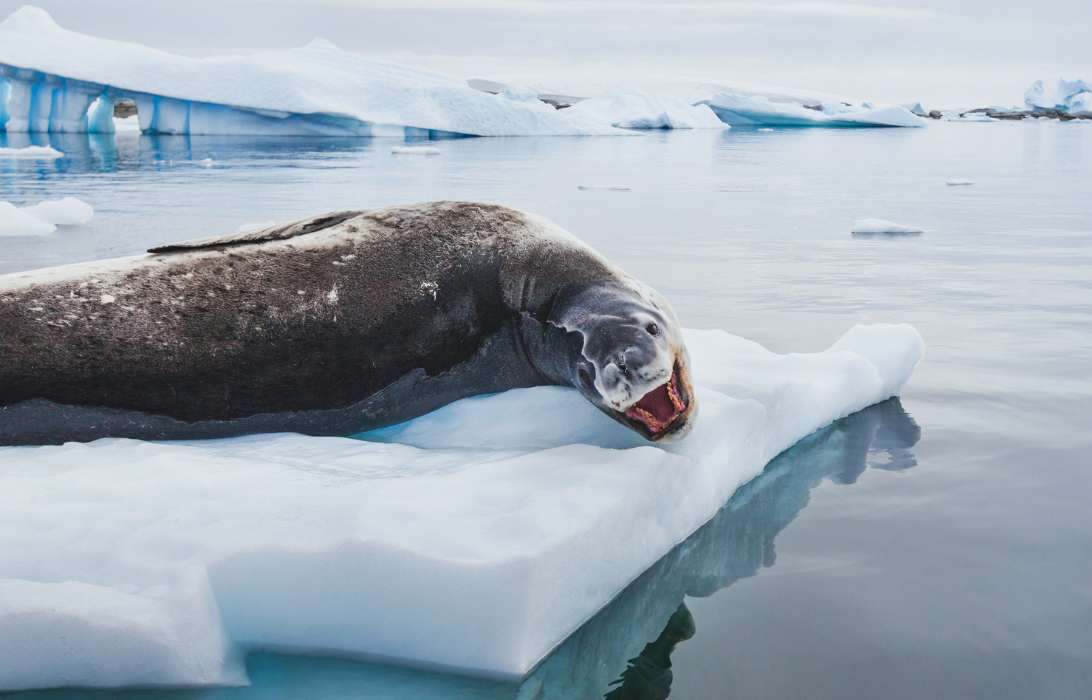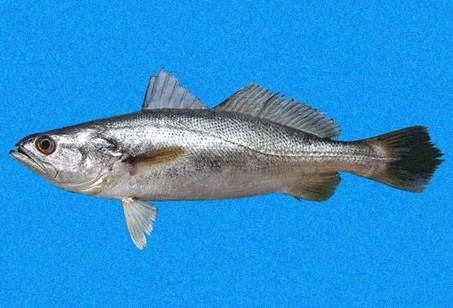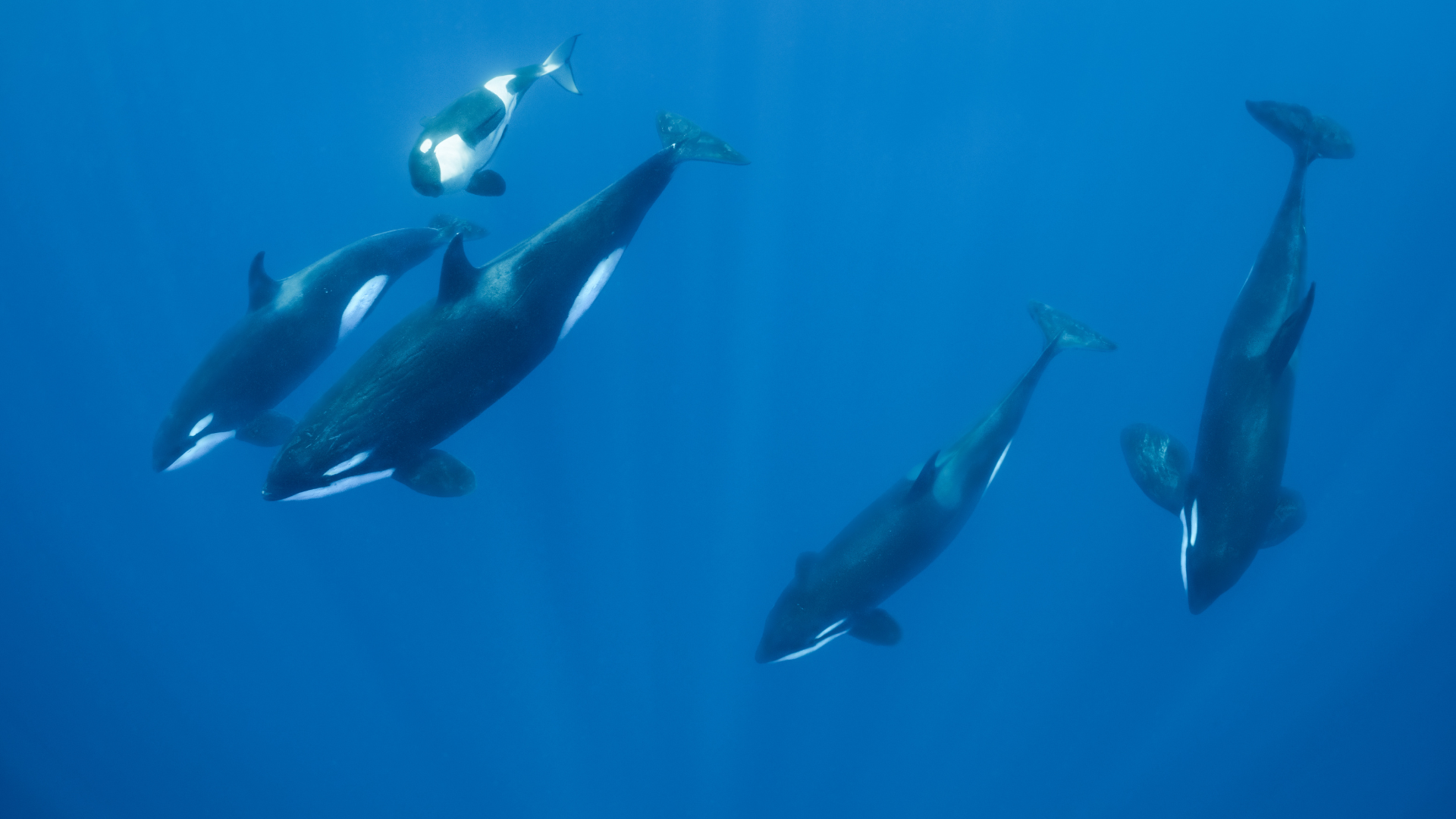LATIN NAME Leptonychotes weddellii
LENGTH 2.5-3.5 m (8.2-11.5 ft) long
WEIGHT 500 kg (1100 lbs) or less
LIFETIME About 20 years
PHYSICAL TRAITS Their coat is mottled with large darker and lighter patches, upturned ‘smiling’ mouths
BEHAVIOR Deep dives, which may reach some 700 m (2,300 ft), avoids blizzards by staying underwater and breathing through holes in the ice, they are very docile and placid animals and can be approached easily, noises that are loud enough to be felt through the ice, can stay underwater for approximately 80 minutes
HABITAT On, under and around the Antarctic sea ice
LOCATIONS Antarctic
FOOD Fish, krill, squid, bottom-feeding prawns, cephalopods, crustaceans and sometimes penguins
PREDATORS Weddell seals have no natural predators when on fast ice. At sea or on pack ice, they become prey for killer whales and leopard seals, which prey primarily on juveniles and pups.
Found in the Antarctic, the Weddell seal’s complex descending sweeps and chirping calls are produced by the males during breeding season, evidence that this vocalization probably has something to do with courtship, advertising breeding fitness, and/or territorial announcements. Signals are complex in frequency, amplitude, and time domain. Not enough is known about these animals to understand what accounts for the complexity.
Audiographs
Wedell Seal
Source: Australian Antarctic Division, Commonwealth of Australia
Links
Literature
Diel patterns in underwater sounds by Weddell seals during two breeding seasons
Charisse Coulombe and Jeanette Thomas
J. Acoust. Soc. Am. 118, 1939 (2005)Diel and seasonal patterns of underwater sounds by Weddell seals, leopard seals, and killer whales in the Antarctic: When it’s adaptive to be quiet Debrah Mindach and Jeanette Thomas J. Acoust. Soc. Am. 118, 1938 (2005)Stereotyped calling patterns of a male Weddell seal Jack M. Terhune and Andrea Dell’Apa J. Acoust. Soc. Am. 118, 1938 (2005)
Charisse Coulombe and Jeanette Thomas
J. Acoust. Soc. Am. 118, 1939 (2005)Diel and seasonal patterns of underwater sounds by Weddell seals, leopard seals, and killer whales in the Antarctic: When it’s adaptive to be quiet Debrah Mindach and Jeanette Thomas J. Acoust. Soc. Am. 118, 1938 (2005)Stereotyped calling patterns of a male Weddell seal Jack M. Terhune and Andrea Dell’Apa J. Acoust. Soc. Am. 118, 1938 (2005)



